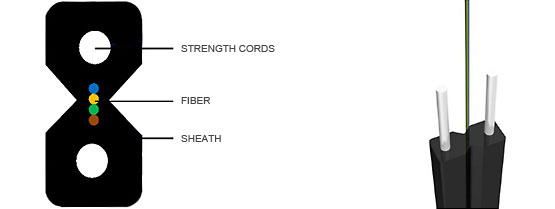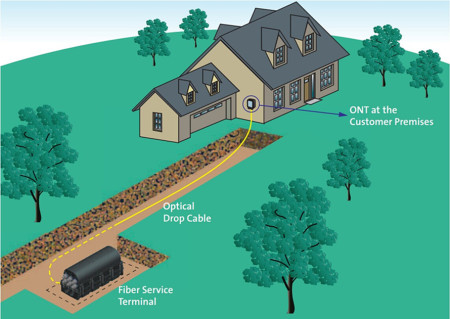Aerial Fiber Cables Tutorial
Aerial fiber optic cables are an essential part of the optical communication networks. They are commonly used in our daily life, like hanging in the pole at the front of our house. How much do you know about the aerial fiber cables? This article can help you learn more about them.
As the aerial fiber optic cables are exposed in the outdoor environment, they have to be made of material which is different to the conventional fiber optic cables to withstand windy, rainy, icy and snowy weathers. What's more, the installation method is different from other cables. Therefore, there are different types of aerial fiber cables.
By installation methods, aerial fiber optic cables can be generally classified as two types: catenary wire and self-supporting. Catenary Wire Aerial Cable is regular outdoor loose tube cables that can utilize the existing overhead pole line to install that saves more in construction costs and shortens the construction period. Self-Supporting Aerial Cable, or All-Dielectric Self-Supporting (ADSS) cable, has cable bonded to an insulated steel or all-dielectric messenger for support. ADSS cables are usually made of heavier jackets and stronger metal or aramid strength members. Nowadays, the self-supporting aerial fiber optic cables are more widely used by people. And the most commonly used ADSS cables are figure-8 aerial cable.

Figure-8 aerial cable greatly simplifies the task of placing fiber optic cable on an aerial plant. It incorporates both a steel messenger and the core of a standard optical fiber cable into a single jacket of "Figure-8" cross-section. The combination of strand and optical fiber into a single cable allows rapid one-step installation and results in a more durable aerial plant. Figure 8 cable is commonly used between the poles in the outdoor.

Figure-8 Aerial Cable
There is also another type of fiber optic cable, the intersecting face of which showing the figure of 8, that is fiber optic drop cable. You should not confound them together.
With the emergence of access networks, including fiber to the business, fiber to the home and fiber to the premises, referred to collectively as FTTx, the demands of new optimized products to meet increasing bandwidth needs are daily increased. One such product is optical drop cable. The conventional drop cable consists of two parallel reinforced core and an optical fiber in the middle of them. The intersecting surface present the figure of 8. Fiber drop cable is widely used in the FTTH networks.

FTTH Indoor Drop Cable

Add a thick steel wire line to the conventional drop cable, the self-supporting drop cable is formed. Self- supporting drop cable has a stronger tensile strength because of its metal hanging units. Therefore, we can also call it aerial drop cable. The aerial drop cable is designed to run from the distribution point to the subscriber. The metal unit will be clipped before entering to the subscriber. The biggest problem for aerial drop cable is that it's more expensive than conventional drop cables.
FTTH Aerial Drop Cable
Marketing: Fiberstore supplies figure 8 areial cables, FTTH Indoor Cable, FTTH Drop Cable, FTTH Duct Armored Cable, etc. In order to cut inventory costs and speed up the installation process for our customers, Fiberstore's FTTH cable designs can simplify your project.
Article Source: How Much do you Know about Aerial Fiber Optic Cables?